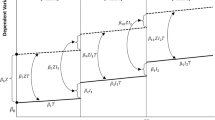Abstract
Sugary drinks and processed foods are associated with negative health outcomes in adults, including weight gain, and their consumption should be limited. However, they may be difficult to avoid if they are ubiquitously available in the retail environment. This study aimed to quantify the availability of such products for sale throughout New York City (NYC) at both food and non-food retailers. In 2018, ten one-mile retail-dense NYC street segments were selected for the sample. Data collectors canvassed each segment and visited all retailers, recording the type (food/non-food) and presence of processed food and beverages for sale. Descriptive statistics were analyzed for availability of products sold in retailers overall and by retailer type. In total, 491 retailers were identified (191 food, 300 non-food). Sugary drinks were available at 83% of food retailers and 19% of non-food retailers, while processed foods were available at 61% of food retailers and 16% of non-food retailers. Eighty-five percent of food retailers and 21% of non-food retailers sold sugary drinks and/or processed foods. This study supports and builds on results of previous research examining the availability of food and beverages in the retail environment. Sugary drinks and processed foods are ubiquitous at food and non-food retailers, providing pervasive cues to consume energy-dense, nutrient-poor products. Restrictions on where such products can be sold merit consideration.


Similar content being viewed by others
References
Drewnowski, A., & Rehm, C. D. (2014). Consumption of added sugars among US children and adults by food purchase location and food source. American Journal of Clinical Nutrition, 100(3), 901–907.
Sources of calories from added sugars among the US population, 2005–06. Applied Research Program Website. National Cancer Institute. Retrieved October 18, 2013 (2 April 2014), from: https://appliedresearch.cancer.gov/diet/foodsources/added_sugars/.
Monteiro, C. A., Cannon, G., Moubarac, J. C., Levy, R. B., Louzada, M. L. C., & Jaime, P. C. (2019). The UN Decade of Nutrition, the NOVA food classification and the trouble with ultra-processing. Public Health Nutrition, 21, 5–17.
Hall, K. D., Ayuketah, A., Brychta, R., Cai, H., Cassimatis, T., Chen, K. Y., et al. (2019). Ultra-processed diets cause excess calorie intake and weight gain: An inpatient randomized controlled trial of ad libitum food intake. Cell Metabolism, 30, 67–77.
Farley, T. A., Baker, E. T., Futrell, L., & Rice, J. C. (2010). The ubiquity of energy-dense snack foods: A national multicity study. American Journal of Public Health, 100(2), 306–311.
Lucan, S. C., Maroko, A. R., Seitchik, J. L., Yoon, D. H., Sperry, L. E., & Schechter, C. B. (2018). Unexpected neighborhood sources of food and drink: Implications for research and community health. American Journal of Preventive Medicine, 55(2), e29–e38.
The World Belongs to the Discontented: Coca-Cola Forefather Robert Woodruff's Enduring Legacy. The Coca-Cola Company. Retrieved June 17, 2019, Published April 28, 2014, from https://www.coca-colacompany.com/stories/the-world-belongs-to-the-discontented-coca-cola-forefather-robert-woodruffs-enduring-legacy.
Hershey's Reese's Peanut Butter Egg. (2019). Easter: In plain sight. Retrieved June 17, 2019, from https://www.youtube.com/watch?v=mI1SPUDMDEM.
New York City Department of City Planning. (2018). PLUTO data [data file]. Retrieved from https://www1.nyc.gov/site/planning/data-maps/open-data.page.
New York City Department of City Planning. (2018). LION geodatabase [data file]. Retrieved from https://www1.nyc.gov/site/planning/data-maps/open-data.page.
ESRI. (2011). ArcGIS desktop: Release 10.5. Redlands, CA: Environmental Systems Research Institute.
Economic Classification Policy Committee. US Bureau of Census. North American Industry Classification System. Retrieved July 20, 2018, from https://www.census.gov/eos/www/naics/index.html.
New York City Department of Health and Mental Hygiene, New York City Board of Health. Notice of Adoption of an Amendment to Article 81 of the New York City Health Code. (2012). Retrieved November 15, 2019, from https://rules.cityofnewyork.us/sites/default/files/adopted_rules_pdf/maximum_sugary_drink_sizes-f-dohmh-09-13-12-a.pdf.
US Department of Agriculture. (2015). Scientific report of the 2015 Dietary Guidelines Advisory Committee. Washington, D.C.: U.S Government Printing Office.
Robert Wood Johnson Foundation and the Rudd Center for Food Policy and Obesity. (2014). Sugary drink FACTS. Retrieved October 10, 2018, from https://www.rwjf.org/en/library/research/2014/11/sugary-drinks-facts-2014.html.
Acknowledgements
The authors wish to thank Ben Spoer as well as the data collectors: Ayda Ahmadi, Amaal Alruwaily, Sana Amin, Sonia Borkowski, Liane Capiral, Sydney Chen, Stephanie Fisher, Amanda Joa, Daniel Karlic, Kaylee Lamarche, Chelsea Mangold, Saman Marji, Sandrine Martin, Kaicy Naranjo, Josephine Pinnock, Michelle Rosa, Noah Rosenberg, Sonia Sharma, Acacia Sharma, and Sarah Younes for their significant contributions to this study.
Funding
This work was supported by the New York City Department of Health and Mental Hygiene.
Author information
Authors and Affiliations
Contributions
TAM collaborated on study design, analyzed the data and co-led writing. AVA collaborated on study design and co-led writing. SMF collaborated on the study design and supported analyses and writing. KAK contributed to interpretation of data and supported writing. MQR managed and cleaned data and contributed to data analysis. MAB collaborated on study design and interpretation of data and supported writing. PER collaborated on study design and interpretation of data and supported writing. All authors read and approved the final manuscript.
Corresponding author
Ethics declarations
Conflict of interest
The authors declare that they have no conflict of interest.
Additional information
Publisher's Note
Springer Nature remains neutral with regard to jurisdictional claims in published maps and institutional affiliations.
Appendix: Data Collection Tool, NYC Retail Canvassing Study, 2018
Appendix: Data Collection Tool, NYC Retail Canvassing Study, 2018

Rights and permissions
About this article
Cite this article
Mezzacca, T.A., Anekwe, A.V., Farley, S.M. et al. Ubiquity of Sugary Drinks and Processed Food Throughout Food and Non-Food Retail Settings in NYC. J Community Health 45, 973–978 (2020). https://doi.org/10.1007/s10900-020-00815-x
Published:
Issue Date:
DOI: https://doi.org/10.1007/s10900-020-00815-x




